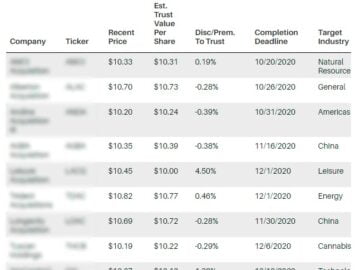Seeking out great stocks to buy is essential, but many would say it’s even more important to know which stocks to steer clear of. A losing stock can eat away at your precious long-term returns. So, figuring out which stocks to trim or get rid of is essential for proper portfolio maintenance.
Even the best gardens need pruning and our team has spotted a few stocks that seem like prime candidates for selling or avoiding. Continue reading to find out which three stocks our team is staying away from this week.
Food delivery leader and pandemic darling DoorDash (DASH) was one of the big winners in the shift to stay-at-home culture. Between 2019 and 2021 DASH revenue increased by 451% from $885 million to $4.88 billion. But once the economic reopening was complete, Wall Street’s enthusiasm over the stock sharply halted. Since hitting its peak in November of last year, the stock has plunged more than 75%. Now that the tide has washed out, investors are left to access what’s left, searching for an answer to the looming question – is profitability in the cards for DoorDash?
DoorDash has never generated a profit with the exception of the second quarter of 2020 where it made a profit of $23 million “It took a global pandemic to drive the firm’s one quarter of profitability. The firm has not been profitable since, and we think it may never be,” said David Trainer, the CEO and founder of New Constructs.
The company is expecting $49 to $51 billion in gross order volume in 2022, implying a modest 14% increase from $41.9 billion last year. However, that’s not enough to justify DASH’s lofty valuation. Currently the stock trades at a price-to-sales multiple of 4.6, expensive when compared to top competitors like Uber Technologies (UBER) which trades at a price-to-sales multiple of 2.1 – half that of DASH.
DASH’s EPS is estimated to remain negative in 2022 and 2023. Its EPS is expected to come in 30% lower year-over-year for the second quarter. The company hasn’t managed to meet EPS expectations for any of the trailing four quarters, missing in Q1 by 26% . Q2 revenues are expected to be $1.52 billion, up 23.4% from the year-ago quarter. The stock has declined 52% since the beginning of the year to close Friday’s session at $69.75.
Fintech company Upstart Holdings (UPST) management lowered its full year guidance when the company posted disappointing preliminary second-quarter results, sparking yet another sell off for the stock. UPST share price is down more than 90% from its October ATH and it may have more to go as bank partners tighten their fists.
Institutional lenders are less willing to fund Upstart’s loans than ever and it makes sense for backers to be so cautious in the current macroeconomic environment. Rising interest rates will continue to add pressure to consumers leading to more defaults. Upstart is especially vulnerable as its AI models have yet to be tested during a significant down period in the credit cycle.
In the preliminary Q2 report, management cited another reason for the lower outlook. Upstart more than doubled the amount in loans it funded with its own cash in just a single quarter. At the end of Q1, the company held $600 million in loans on its own balance sheet, up from $250 million in the previous quarter, severely exposing its balance sheet to credit risk at what could be the worst possible time.
Previously, Q2 guidance called for $300 million in revenue and a net loss of $2 million. The company is now estimating $228 million in revenue and a net loss of $29 million. That implies revenue growth of roughly 18%, representing a sharp deceleration from the quadruple-digit revenue growth UPST delivered in Q1 2021. With growth momentum slowing while competition in the space is simultaneously growing, UPST is one stock to stay away from for now.
Inflation is taking a heavy toll on input costs for digital printing company Xerox (XRX) all while supply-chain disruptions are impeding the company’s ability to manufacture higher-margin products. XRX has lost 25% of its value since the beginning of the year. Anyone looking for a reason to buy on the dip of this long time laggard would be hard pressed to find one.
Xerox stock has carried a consensus Sell recommendation for more than a year. Zooming out on XRX’s chart, it’s not hard to see why. The stock has underperformed the broader market by drastic margins in five of the past seven years. According to the pros, there’s little reason to see it snapping the losing streak anytime soon.
“Prior to the pandemic, Xerox had faced pressure from the rise of the paperless workplace and the corresponding decline in imaging equipment revenue,” writes Argus Research analyst Kristina Ruggeri (Hold). “The increase in work-from-home practices during the pandemic further accelerated this trend.”








